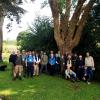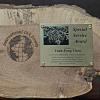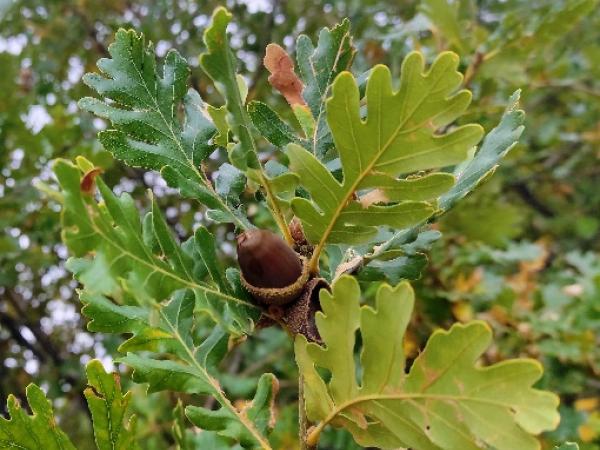Editor's Picks
Plant Focus
“Conversations with Conservationists” is a new series of articles that will highlight oak conservation work carried out by IOS members. For this first edition, Amy Byrne, Coordinator of the Global Conservation Consortium for Oak (GCCO), interviewed Christy Powell, Horticulture Manager at the San Diego Zoo Wildlife Alliance (SDZWA).
Christy Powell plays many roles at SDZWA: overseeing the collections, volunteers, integrated pest management, plant records, landscape areas of Africa Rocks through North Elephant Odyssey, nursery operations, micropropagation lab and the orchid greenhouses. On top of this, she has played a huge role in the institution’s plant conservation activities. Christy emphasized that, although in-situ conservation is critical, there are threats currently facing oaks that limit the ability to protect and conserve them in their native habitats. Her team, however, is able to control the collection, propagation, and dissemination of oaks to other botanic gardens, where they can be backed up in ex-situ collections, creating a diverse metacollection1 for the threatened oak species. They are also now trying to move the needle to expand the capacity and support in cryopreservation, as this requires a smaller amount of space to conserve oaks long term, compared to growing them out on the property.

© Caitlin Kreutz, Environmental Resource Coordinator, Rancho Santa Fe Association
As a member and Species Steward for the GCCO, she is helping to spearhead oak conservation efforts in California. She and her colleagues at SDZWA, including Greg Bluffin (Horticulturist), Dario Berrini (Sr. Horticulturist), Tim Hoehn-Boydston (Sr. Plant Propagator), Laureen Bellmer (Sr. Horticulturist), Elisa Lively (Intern), Dr. Joe Ree (Post-Doctoral Associate), Stacy Anderson (Research Coordinator II, Native Plant Seed Bank), Joe Davitt (Research Associate I), and Tobin Weatherson (Research Associate I) have largely focused on conserving Quercus cedrosensis, Q. dumosa, Q. pacifica, and Q. tomentella. This role within the GCCO was a natural fit for her as she has always been interested in conservation work.
In overseeing the collections, Christy utilizes a conservation perspective and has been motivated to ensure the collections are meaningful at SDZWA. More specifically, she has been focused on creating conservation quality collections for plant species, so they can serve as a back-up to the wild populations. These collections normally consist of seedlings and saplings of oak species, but more recently Dr. Joe Ree at SDZWA has focused on cryopreservation and tissue culture, another method for conserving plant species long term. These methods are critically important for exceptional species, such as oaks, whose acorns cannot be seed banked following traditional methods.

More specifically, there are a few ex-situ conservation projects that Christy wants to highlight to the IOS community. Dr. Ree has been working on cryopreservation and tissue culture protocols for Q. dumosa and is now working to expand it to other oaks and plant species in southern California. Additionally, Christy and her SDZWA team have been conducting expeditions to Otay Mountain and the Channel Islands to collect material for propagation. The threatened Cedros Island Oak (Q. cedrosensis) is found on Otay Mountain. These individuals have produced only a handful of acorns in a number of years, so the team at SDZWA and San Diego Botanic Garden are experimenting with air layering and cutting propagation methods. So far, they have two cuttings that are rooted and another batch of cuttings in the mist chamber that are beginning to root. They are continuing to experiment on the timing of collection for the cuttings and air layering. These methods will be shared with the broader oak conservation community when they are finalized. Finally, Christy and her team at SDZWA are collecting material from Q. pacifica and Q. tomentella on the Channel Islands to propagate and distribute to other gardens on the mainland, which will serve as refugia2 sites for these threatened species.

With all this important oak conservation work that Christy and her team have been involved in, she said that one of their biggest achievements would be the critical collaborations and partnerships they have formed through the GCCO, the IOS, and other oak conservation communities. She looks forward in the years ahead to continuing and expanding the collaborative conservation work she has been involved in.

1 A metacollection is defined as the combined holdings of a group of collections. For gardens, metacollections are envisioned as common resources held by separate institutions but stewarded collaboratively for research and conservation purposes. Networking multiple collections into a single metacollection increases potential coverage within a group, allows broader access to greater diversity, dilutes risk of loss, and can reduce maintenance costs. For more details, see Toward the Metacollection: Coordinating conservation collections to safeguard plant diversity
2 Refugia are places where species persist and from where they can potentially expand under changing environmental conditions















